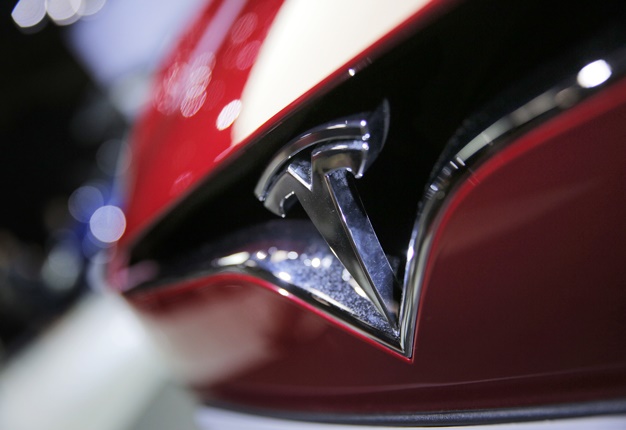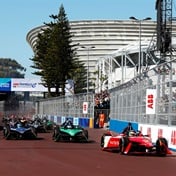
San Francisco - Elon Musk is the undisputed champion of communication. Day after day announcements keep coming to reassure investors and the financial markets. In Tesla’s 2016 annual report, Musk stated that the company would produce 500 000 vehicles in 2018. In November 2017, he unveiled the Semi Tesla, a fully electric semitrailer that generated significant interest and orders. And on February 6, 2018, he sent a car into space.
Behind Musk’s magic tricks, what is the reality? Is the marketing genius as effective in production? And where are the fundamentals of the Tesla group?
Far-reaching communication
The president and founder of Tesla and SpaceX, Elon Musk completed a master stroke by using the February launch of SpaceX’s Falcon Heavy to put a red Tesla Roadster in space. It even had a driver, a mannequin called “Starman”. It was a beautifully orchestrated operation, and the video shows images of the Earth below, with David Bowie’s “Space Oddity” playing in the background.
The stunt made headlines around the world, and was one of the most far-reaching advertising messages ever – and was enough to distract investors from the fact that Tesla’s financial situation is far from idyllic.
An undisputed champion of marketing and a mythical character, Elon Musk is making people believe their dreams can become true. Not only does he make the company’s current and potential customers dream, but he also makes the financial markets dream. By taking the analysts and investors with him, Musk has been able to propel Tesla’s share price to great heights. Introduced to the stock market in June 2010 at $17, Tesla’s shares reached $352.05 on February 23, 2018, an increase of 1 970%.
Tesla’s capitalisation exceeds that of Ford and GM
With a price of around $299 per share at the beginning of April 2017, Tesla Motors’ market capitalisation reached $48.2 billion and was ahead of Ford Motor Company on April 3, 2017. In early May 2017, Tesla’s market capitalisation reached $52.6 billion, surpassing General Motors’ by $1 billion.
Since then, the stock price (judged at the highest point) has continued to rise, reaching a market capitalisation of $59.4 billion on February 23, 2018, more than double that of Renault-Nissan (25.4 billion euros, and the world’s largest automaker by sales volume and more than General Motors ($57.4 billion) and Ford Motor Company ($41.7 billion) as of February 23, 2018.
Yet Tesla has so far sold far fewer cars than Ford, General Motors and Renault-Nissan, and has accumulated losses since its inception. So what elements justify such enthusiasm on the part of investors? While the company’s tremendous growth prospects and position as the sole builder of 100% electric vehicles in the world undoubtedly contribute to the appetite of investors, emotional factors seems to be the key drivers. It’s Elon Musk who leads the dance – charismatic, iconoclastic, innovative and driven by his wildest dreams.
A new concept of transport
The California-based automaker Tesla was founded in 2003 by Martin Eberhard and Marc Tarpenning, and has been successful in attracting customers to the concept of a high-performance, fully electric car with that’s simple to use despite being extremely complex. The company initially focused on luxury models with the Model S and Model X, costing nearly $100,000 each. Since then Elon Musk has worked to expand its offerings with the more affordable Model 3, with a starting price of $35,000.
Musk’s marketing genius lies above all in his ability to unite clients around a new concept: driving differently, being eco-responsible and participating in the fight against pollution. Despite the hype, however, Teslas may not be as green as you might think. The question of the vehicles’ limited range also remains to be solved.
Beyond dreams, myths, what about reality?
Production difficulties
Despite Musk’s announcements and the promises of record numbers, Tesla is facing serious production problems that are causing delivery delays and pushing up inventories. In a June 3, 2017 article titled “Elon Musk: Tesla factory injuries ‘break my heart’ ”, Business Insider revealed that the workplace accident rate at Tesla’s Fremont production site were higher than the industry average in 2014 and 2015. In a January 4, 2018, article in the _Washington Post, “Why are you even reading that Tesla announcement?, Bloomberg’s Liam Denning laid out how Tesla has not kept its promises in terms of production.
Production figures are constantly being revised downward and fewer than 25,000 vehicles were produced in the last quarter of 2017. The level of vehicle production has remained virtually stable between the last quarter of 2016 and the last quarter of 2017. Musk announced in early November 2017 a weekly production of 5,000 units of Model 3, this was revised down to 2,500 units per week for the 1st quarter of 2018. And in the last quarter of 2017 only 2,425 units were produced, according to Denning.
In a press release issued on February 7, 2018, Tesla’s management acknowledges the production difficulties and delays, especially with the Model 3. However, it indicated that Tesla wants to use state-of-the-art robots to become "the best automaker”.
Fragile fundamentals
Tesla’s financial statements reveal that the company’s fundamentals are far from solid. The group’s debt (total financial debts/shareholders’ equity) reached 200% in 2016 (including resale value guarantees) and its net debt – (total financial debt less cash and cash equivalents)/shareholders’ equity – rose to 129%.
In other words, Tesla had more debt than funds. However, there was a debt reduction in 2016 following two share capital increases: one to finance additional investments for the launch of its Model 3 electric sedan and another for the acquisition of SolarCity in November 2016.
Total debt (total debt/equity) is a staggering 352%, meaning that Tesla’s debts represented more than 3.5 times its equity in 2016. Add to that, Tesla has only posted losses since its inception. At the end of 2016, cumulative losses were close to $3 billion, despite a turnover of $7 billion in 2016, up 73% from 2015.
Beyond the losses, another worrying issue concerns the company’s operating cash flow. Although the situation improved significantly between 2015 and 2016, from a negative operating cash flow of $524 million to a negative operating cash flow of $124 million, Tesla has yet to post a positive operating cash flow at year end.
Admittedly, the group had a positive cash position on its balance sheet of $3.4 billion at the end of 2016, but when we analyse this balance in detail, it is clear that Tesla’s liquidity comes only from external financing (debts or issuance of shares). This is a crucial point to follow, as Tesla needs significant amounts of cash to cover investments in its Fremont plant and Gigafactory 1 and 2, continue with Supercharger installations, support its R&D efforts (around 11.7% of total revenues) and accelerate production (in particular the Model 3).
Cash flow that isn’t
In a Fortune article “Why Tesla’s cash crunch may be worse than you think”, Shawn Tully warns that starting in the fourth quarter of 2015, Tesla would have added cash received from banks for leased vehicles with a resale value guarantee to its operating cash flow. This practice would have improved Tesla’s operating cash flow when in fact cash was not generated from operations but from a bank loan, distorting its true operating cash position.
The final results for 2017 have been filed and the group announced on February 7, 2018 that despite the increase in total revenue of 55% (organic growth) from 2016 to $11.8 billion to the end of 2017, Tesla experienced a net loss of $1.96 billion (compared to a loss of $675 million in 2016).
This loss was caused by production difficulties on the Model 3, unexpected start-up and other operating costs, and financial expenses of almost $500 million. Indebtedness jumped again with a total debt-to-equity ratio of 543%. In other words, Tesla’s debts now represent more than five times its funds.
Despite fragile fundamentals and significant cash requirements, it seems that the dream of Tesla and its growth prospects continue to attract investors. They certainly see Tesla’s massive efforts in R&D and large-scale projects are a clear path to becoming the car manufacturer of the future.
![]() Musk, who reacted to the launch of Falcon Heavy by saying “Crazy things can come true”, embodies this vision. While he can seduce the crowds with conviction, let’s not forget that he owns almost 20% of Tesla’s share capital and that it’s crucial for him to maintain the support of the financial markets. It remains to be seen if his announcements will continue to persuade those who finance his company – and in so doing, maintain its share price above $300 and keep the “Tesla bubble” from bursting.
Musk, who reacted to the launch of Falcon Heavy by saying “Crazy things can come true”, embodies this vision. While he can seduce the crowds with conviction, let’s not forget that he owns almost 20% of Tesla’s share capital and that it’s crucial for him to maintain the support of the financial markets. It remains to be seen if his announcements will continue to persuade those who finance his company – and in so doing, maintain its share price above $300 and keep the “Tesla bubble” from bursting.
Isabelle Chaboud, Professeur associé d’analyse financière, d’audit et de risk management, Grenoble École de Management (GEM)
This article was originally published on The Conversation. Read the original article.




 Publications
Publications
 Partners
Partners

















